The Indigenous Jola People
Ethnonyms: Ajamat, Ajamatau, Bachuki, Diola, Jolla Countries inhabited: The Gambia, Guinea-Bissau, Senegal Language family: Niger-Congo Language branch: Atlantic
Click/tap an image to begin a captioned slideshow and, where available, stock licensing information.
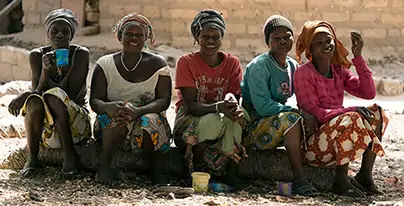 Like their cousins who were converted long ago to Christianity or Islam, traditional Jolas are monotheistic. But their cultural and ritualistic life today overlaps little further with those cousins. Soon after I entered their village in Senegal, West Africa, I came across these Karon women (known by that name due to their dialect of the Jola language) drinking palm wine. Whereas that alcoholic drink has been consumed ritualistically by the Animist Jolas for hundreds of years, these women were not taking part in any ritual.
Like their cousins who were converted long ago to Christianity or Islam, traditional Jolas are monotheistic. But their cultural and ritualistic life today overlaps little further with those cousins. Soon after I entered their village in Senegal, West Africa, I came across these Karon women (known by that name due to their dialect of the Jola language) drinking palm wine. Whereas that alcoholic drink has been consumed ritualistically by the Animist Jolas for hundreds of years, these women were not taking part in any ritual.
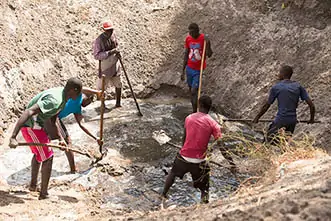 After enjoying their hospitality (and their palm wine), it didn't take me long to find out why palm wine was their preferred drink. Nearby, six men were digging a new well
After enjoying their hospitality (and their palm wine), it didn't take me long to find out why palm wine was their preferred drink. Nearby, six men were digging a new well
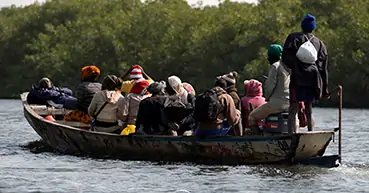 as part of a long-term village project to improve the quality of their drinking water. They'd just reached down to the water table, but it would be a few days yet before they could drink from the new source. If I'd drunk the water they were used to drinking I would have died.
as part of a long-term village project to improve the quality of their drinking water. They'd just reached down to the water table, but it would be a few days yet before they could drink from the new source. If I'd drunk the water they were used to drinking I would have died.
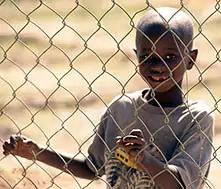 Situated in close proximity to the mighty Gambia and Cassamance rivers,
Situated in close proximity to the mighty Gambia and Cassamance rivers,
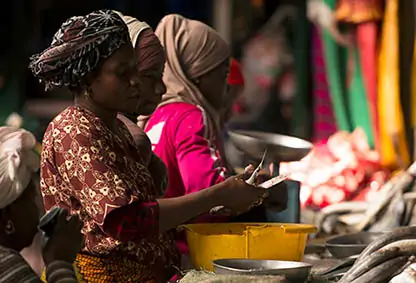 as well as the Atlantic Coast, the Jola have always counted fishing among their livelihoods.
But that geographic disposition also made them vulnerable to capture by European slave hunters. Countless Jolas were, along with members of similarly-located indigenous groups, enslaved and trafficked during the trans-Atlantic slave trade.
as well as the Atlantic Coast, the Jola have always counted fishing among their livelihoods.
But that geographic disposition also made them vulnerable to capture by European slave hunters. Countless Jolas were, along with members of similarly-located indigenous groups, enslaved and trafficked during the trans-Atlantic slave trade.
Living in extended, clan-based villages, an egalitarian society
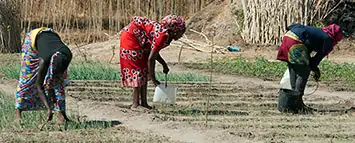 had allowed the Jola to survive up to the time of European contact. Rice cultivation, palm wine tapping and cattle rearing formed,
had allowed the Jola to survive up to the time of European contact. Rice cultivation, palm wine tapping and cattle rearing formed,
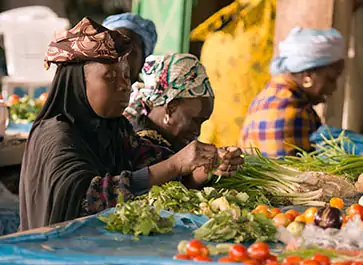 and still form, their main economy. These activities are supplemented by others
such as raising crops like onions,
and still form, their main economy. These activities are supplemented by others
such as raising crops like onions,
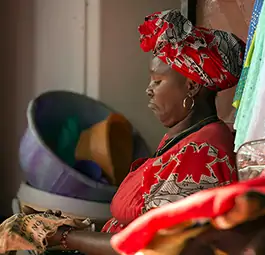 peppers, tomatoes and fruits which are tended mainly by women and are primarily subsistence crops with surplus being sold at market.
peppers, tomatoes and fruits which are tended mainly by women and are primarily subsistence crops with surplus being sold at market.
Revolving around religious and other cultural ceremonies (which were tied closely to their economy), their life was simple. These days both Christian and Islamic traditions influence those ceremonies. But even the converted still practice remnants of their heritage — particularly in the cases of funerals and coming-of-age initiation ceremonies,
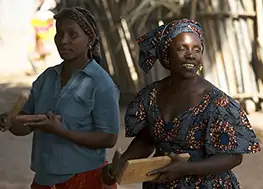 which are often accompanied by secret masked dancing.
which are often accompanied by secret masked dancing.
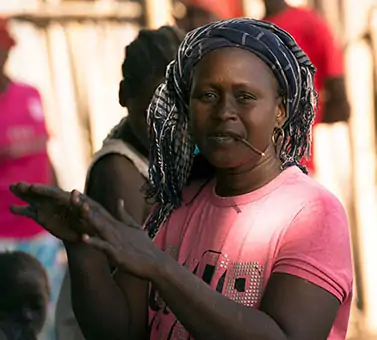 Oral tradition still has a large role to play in preserving Jola heritage through performance of music,
chanting and dancing. In the small Gambian village of Berending I was witness to all three during a ritual that lasted about an hour. Even though it was staged for the visitor, it provided an authentic glimpse into how a people keep their culture alive even today in the age of literacy when,
Oral tradition still has a large role to play in preserving Jola heritage through performance of music,
chanting and dancing. In the small Gambian village of Berending I was witness to all three during a ritual that lasted about an hour. Even though it was staged for the visitor, it provided an authentic glimpse into how a people keep their culture alive even today in the age of literacy when,
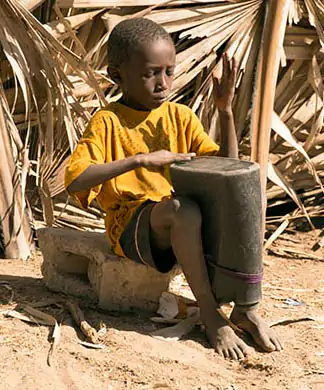 previously, no such medium was available to them. It also offered an example of the egalitarian nature of Jola life since men, women, boys and
girls were equally represented.
previously, no such medium was available to them. It also offered an example of the egalitarian nature of Jola life since men, women, boys and
girls were equally represented.
That egalitarianism is also observed in the social structure of Jola villages. Here, there is no recognized stratification based on the caste or class systems.
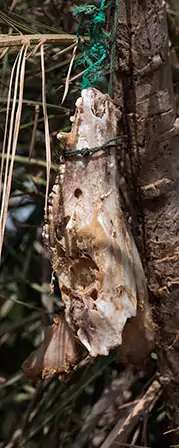 Instead, the oldest male is traditionally regarded as the figurative head of the village, but his powers are restricted to dispute resolution.
In contrast, when a Jola woman leaves her village to seek wage labor as, for example, a domestic housekeeper, she is very much subjected to the caste and class systems that exist outside her village.
Instead, the oldest male is traditionally regarded as the figurative head of the village, but his powers are restricted to dispute resolution.
In contrast, when a Jola woman leaves her village to seek wage labor as, for example, a domestic housekeeper, she is very much subjected to the caste and class systems that exist outside her village.
The Jola are one of the oldest indigenous peoples in the Senegambia region. Still, little detail is known about their origin and early history. They likely originated in the Cassamance region of present-day Senegal, from where they would have migrated north and south. They share, with the Serer people, a legendary account of their origin. According to that legend, two sisters were on a small boat that perished at the Pointe de Sangomar (a small, Atlantic island just north of the River Gambia). The survivors who followed one of the sisters, Agaire, as she headed south are the ancestors of the Jola. We do know that the Jola historically resisted contact with and usurpation from outsiders. Initially that contact was with other indigenous groups with whom they shared the region. Around six hundred years ago their outside contact was expanded to European explorers followed shortly thereafter by Islamist evangelists. Later, as the British and French joined Portuguese colonists in the region, the Jola again tried, initially, to resist both colonization and Christian missionization. As with most such efforts, the resistance eventually waned. Today, most Jolas speak one or more of English, French and Portuguese and are influenced to some degree by Christianity or Islam (or both).
God, to the Jola, is Ata Amit. He is their monotheistic creator of all things (much like the God of Abraham). In addition to Ata Amit, traditional Jolas believe in the Bakin. These are a collection of (supernatural) spirits to whom the Jola make praise and sacrifice for protection. As I stepped foot on the island village where the women were drinking their palm wine, the first sight I saw was the skull of an animal that had been sacrificed.
Photography copyright © 1999 -
2026,
Ray Waddington. All rights reserved.
Text copyright © 1999 -
2026,
The Peoples of the World Foundation. All rights reserved.

Waddington, R. (2019), The Indigenous Jola People. The Peoples of the World Foundation. Retrieved January 2, 2026, from The Peoples of the World Foundation. <https://www.peoplesoftheworld.org/text?people=Jola>
Web Links
Indigenous Dances of West Africa (short film on YouTube)
Diola (Jola) - Minority Rights Group
A traditional Jola initiation festival
Books
Linares, O.F., (2007) Power, Prayer, and Production: The Jola of Casamance, Senegal. Cambridge: Cambridge University Press.
Mark, P., (1992) The Wild Bull and the Sacred Forest: Form, Meaning, and Change in Senegambian Initiation Masks. Cambridge: Cambridge University Press.

